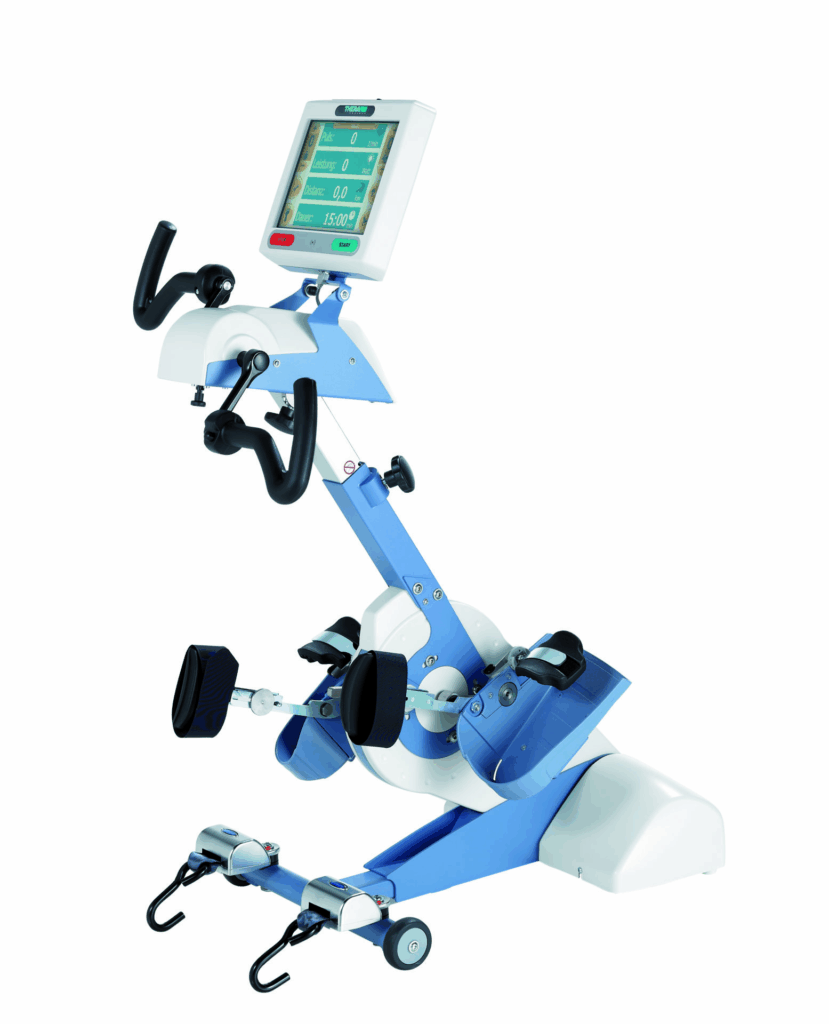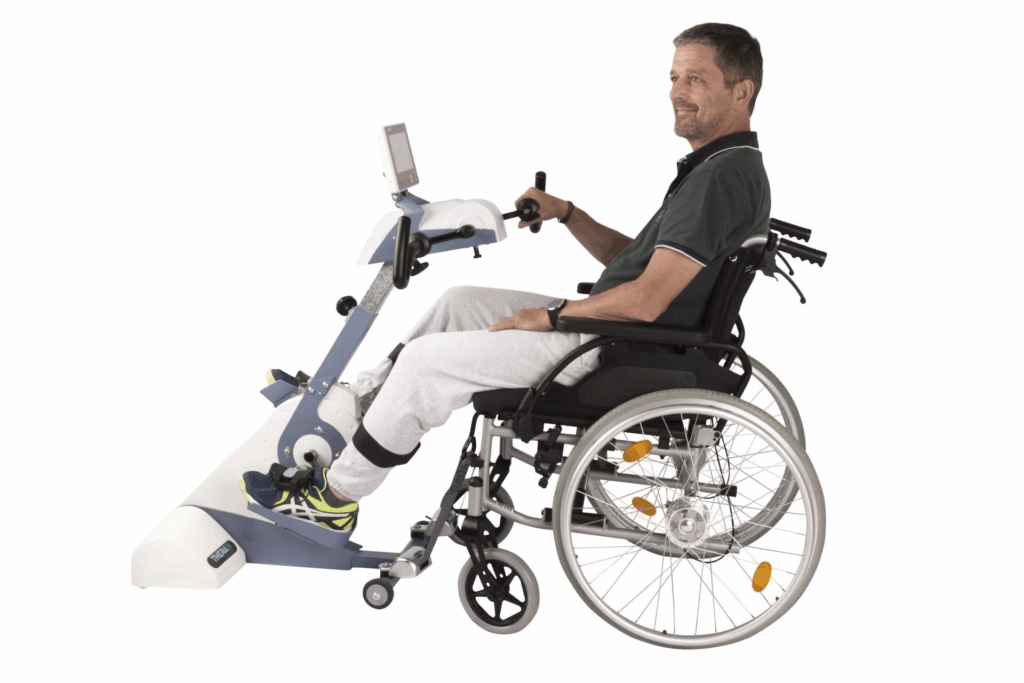This post is also available in: German


Background
Exercise trainers are therapeutic movement devices that are specially designed for use at home and can be used on a daily basis. They use an integrated electric motor to enable circular movements of the arms and legs (passive movement). If muscle strength is maintained, movement training with the patient’s own muscle strength (active movement) of the legs and upper body can be made possible. These aids should be seen as a supplement to physiotherapy, as physiotherapy and occupational therapy sessions are limited in time. Movement trainers can be used to strengthen the preserved muscle groups, reduce spasticity, maintain joint mobility, promote blood circulation and reduce the risk of thrombosis and arthrosis. By preventing contractures, arthrosis and lymphoedema, joint, capsule and muscle pain can be reduced or prevented.
Function and structure
Therapeutic movement trainers are aids that enable device-based physiotherapy of the legs and arms in the home. Depending on the severity of the paralysis, therapeutic movement trainers for the arms and legs offer an active or passive mode of device-based physiotherapy.
Exercise trainers can strengthen the preserved muscle groups, reduce spasticity, maintain joint mobility, promote blood circulation and reduce the risk of thrombosis and arthrosis. By preventing contractures, arthrosis and lymphoedema, joint, capsule and muscle pain can be reduced or prevented
Therapy recommendation
The best results are achieved by using the exercise trainer 5-6 times a week for 20-30 minutes each time.
Study on the use of a movement trainer for ALS
In a recent study, 106 patients with ALS (women: 64%, n=68; men: 36%, n=38) who were provided with a therapeutic exercise trainer were analyzed. The study was conducted from February 2019 to January 2020 at nine specialized ALS centers in Germany.
In the study, the majority of patients (60%) used the therapeutic exercise trainer at least 5 times a week. Almost 9% even received device-supported physiotherapy more than 10 times a week. Only 19% used the device only 1 to 2 times a week.
Patient satisfaction with the therapeutic movement trainer
Satisfaction with the therapeutic movement exerciser was determined by the so-called recommendation probability using the Net Promotor Score (NPS): “How likely is it that you would recommend the movement trainer, to a friend (m/f) or colleague (m/f) who suffers from spasticity or flaccid paresis?” The answers were given on a scale between 0 (absolutely unlikely to recommend) and 10 (highly likely to recommend) points.
The likelihood of recommending the therapeutic movement trainer to others was rated with an NPS of +61 points (NPS scale -100 to +100, >0 = positive rating). This corresponds to a very high level of satisfaction with the aid.

Figure: Net Promoter Score (NPS) for satisfaction with a therapeutic exercise trainer, n=105
Benefits of device-based physiotherapy from the patient’s perspective
The following picture emerges from the patients’ experiences regarding the benefits of therapeutic movement trainers. Four treatment areas achieved a particularly high level of approval: improvement in general well-being (98%), reduction in the feeling of immobility, improvement in the feeling of “having achieved something” and reduction in the feeling of “getting rusty” (97% in each case). The two treatment goals of reducing muscle stiffness (92%) and maintaining muscle strength (91%) also received a high level of confirmation. Other important effects are shown in the following figure.

Figure: Subjective benefit of device-based physiotherapy
Product advantages
- Customizable: Individually adjustable to every body and every need
- Safe: secure legs or arms in just a few simple steps
- Modern: Keep all training settings under control thanks to the tilt-adjustable and viewing angle-independent control and display unit
- Intuitive: Start the training with a single press of a button End the training with your own voice
- Motivating: Train with ease thanks to motivating training programs
- Cost coverage: Costs can be covered by health insurance on the basis of a doctor’s prescription and a trial by specialized providers
Prerequisites
Users of an exercise bike may have the following conditions:
- Amyotrophic lateral sclerosis (ALS)
- Stroke
- Multiple sclerosis
- Muscular dystrophy
- Parkinson’s disease
- Spinal cord injury
- Other diseases that affect the motor function of the upper and/or lower extremities


